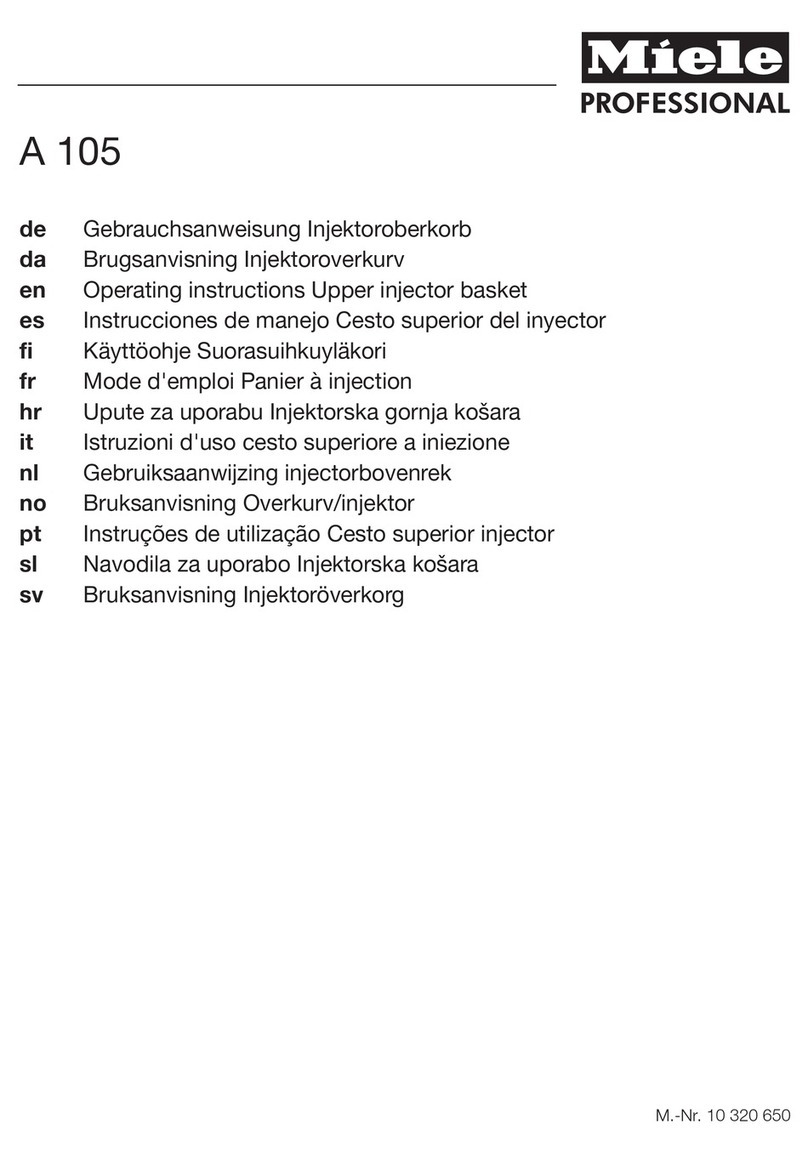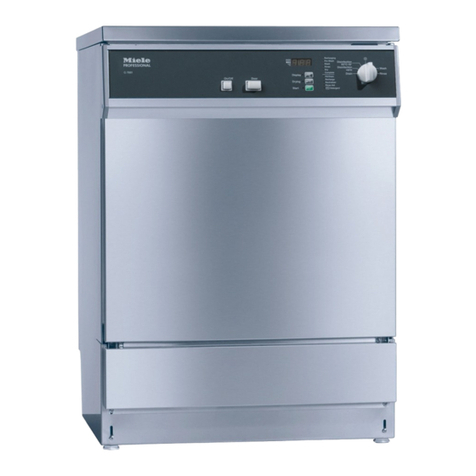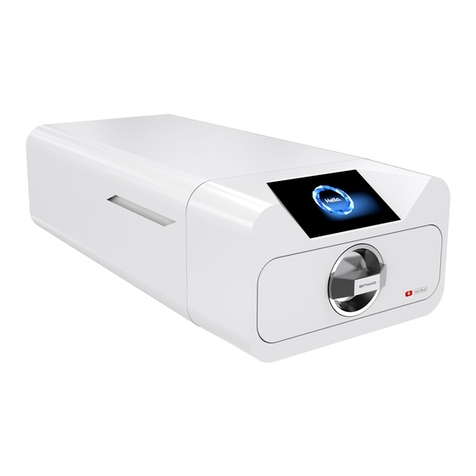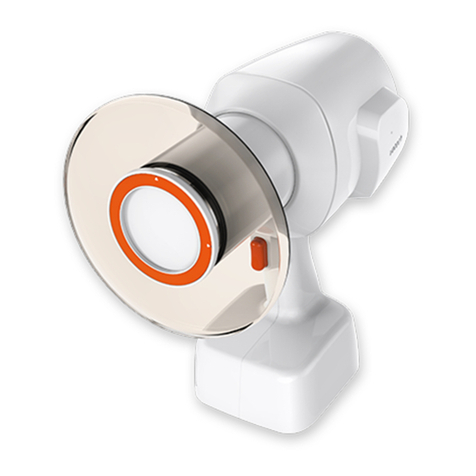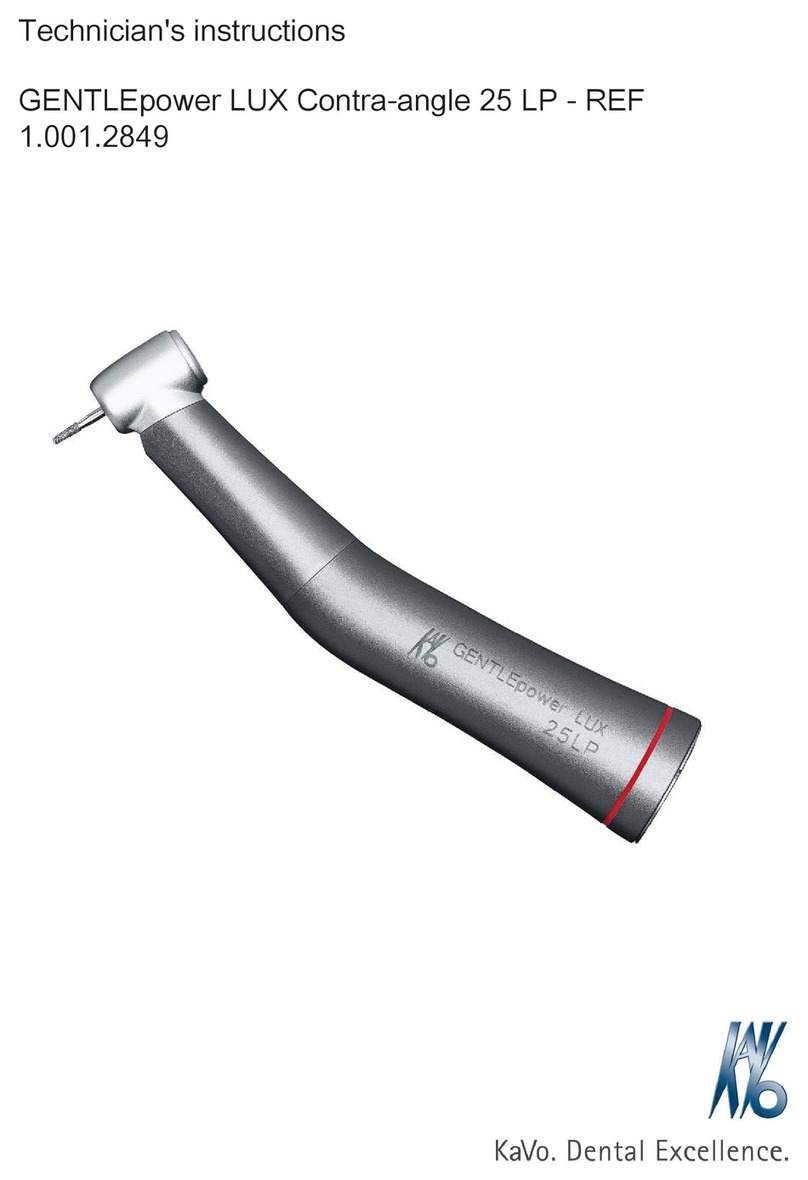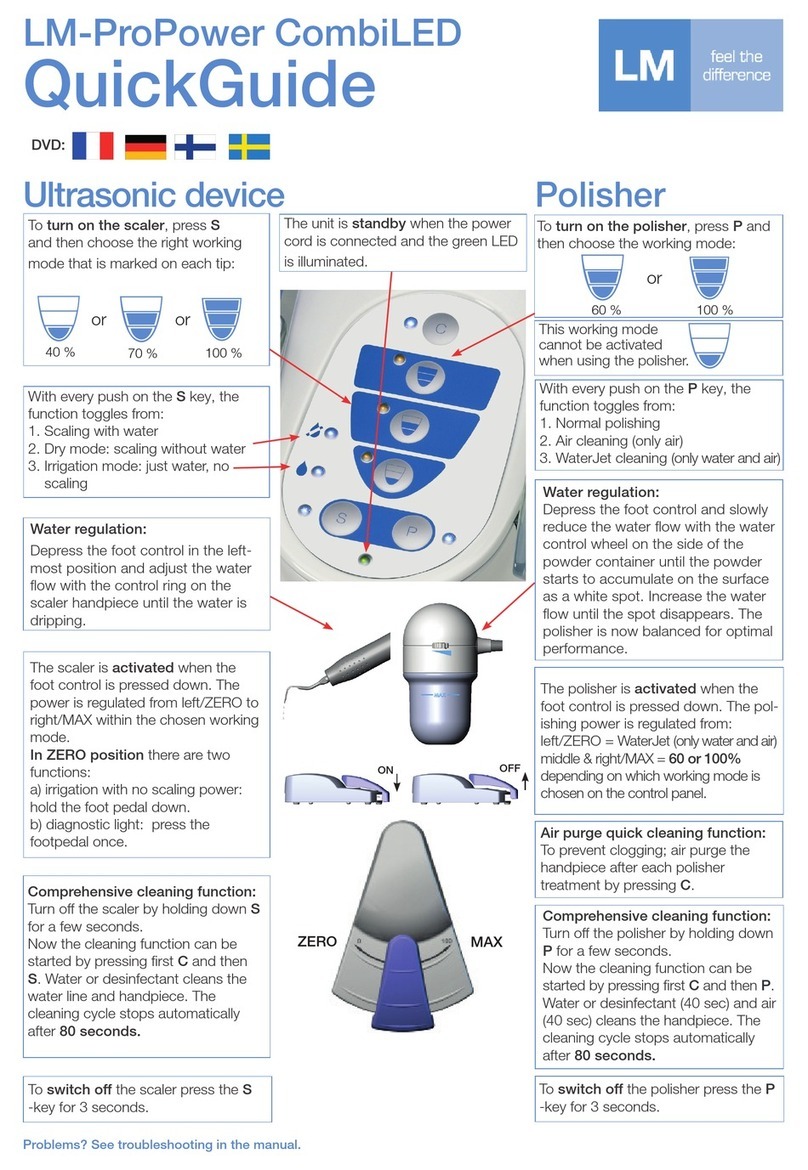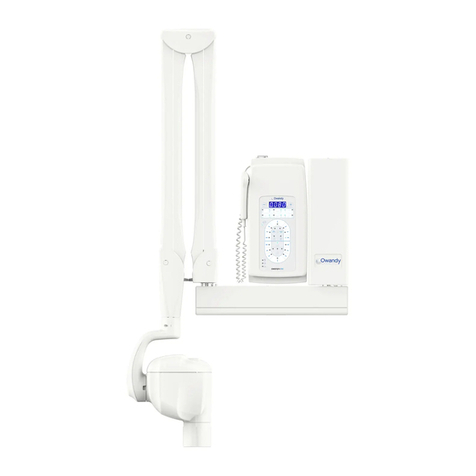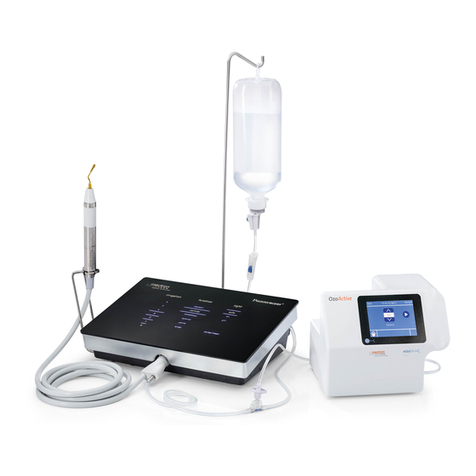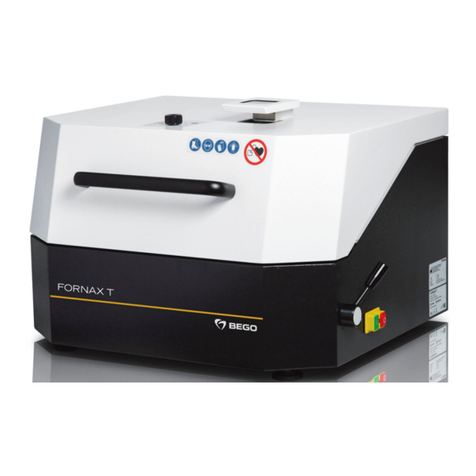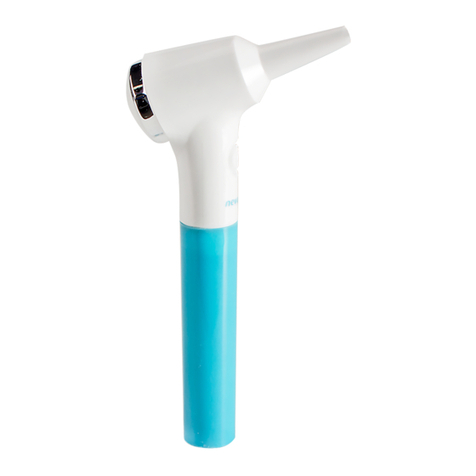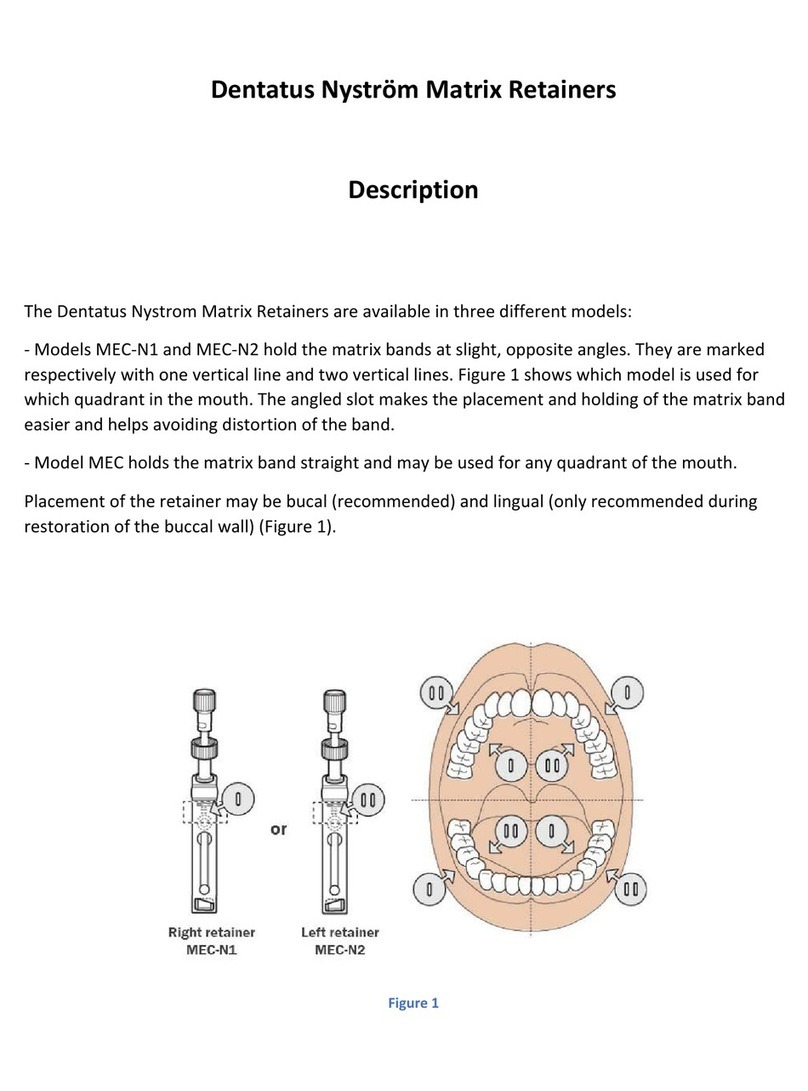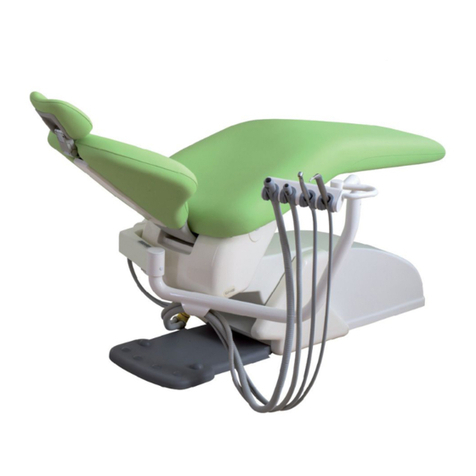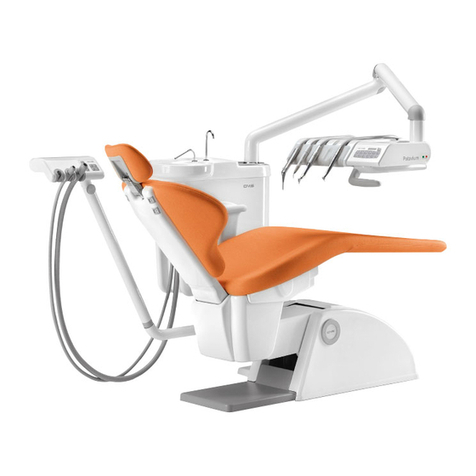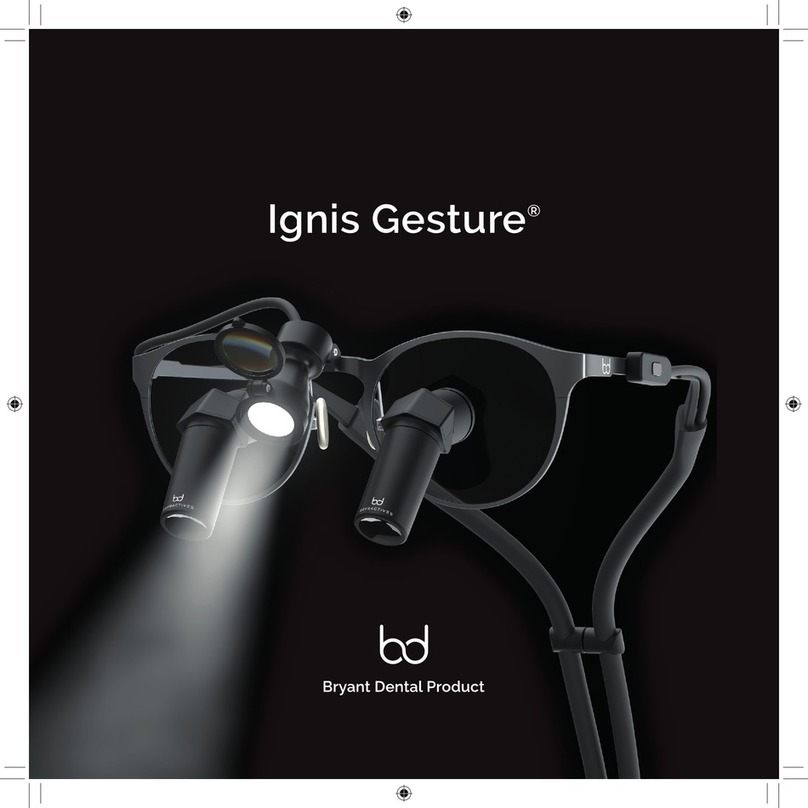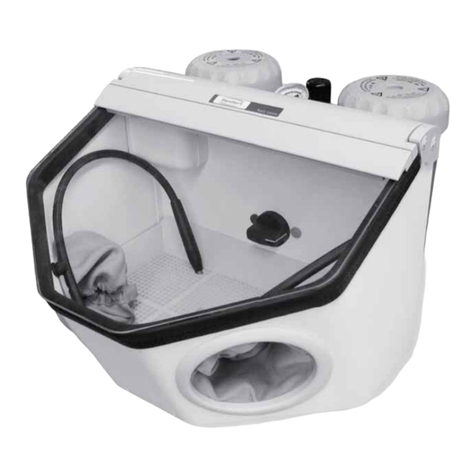Miele PG 8581 User manual

Operating Instructions
Dental Washer-Disinfector
PG8581
To prevent accidents and machine damage,
read these instructions before installation or
use.
en - US
M.-Nr. 10 605 203

2

Contents
3
Guide to the manual ........................................................................................................ 7
Definition of terms ............................................................................................................. 7
IMPORTANT SAFETY INSTRUCTIONS .......................................................................... 8
Symbols on the machine................................................................................................... 13
Intended use of the machine.......................................................................................... 14
Proper use ......................................................................................................................... 14
Fields of application .......................................................................................................... 14
Incorrect use...................................................................................................................... 14
General information for proper use ............................................................................... 15
User profiles..................................................................................................................... 16
Product description......................................................................................................... 17
Machine overview.............................................................................................................. 17
Control panel..................................................................................................................... 18
LEDs in the buttons........................................................................................................... 19
Operation.......................................................................................................................... 20
Display illustrations............................................................................................................ 20
Switching on...................................................................................................................... 21
Switching off...................................................................................................................... 21
Auto-off function ............................................................................................................... 21
Ready for operation (standby) ........................................................................................... 21
Display interface................................................................................................................ 22
Menu operation ................................................................................................................. 22
Settings in the menu ......................................................................................................... 23
Symbols in the display ...................................................................................................... 24
Opening and closing the door........................................................................................ 25
Electronic door lock .......................................................................................................... 25
Opening the door .............................................................................................................. 25
Closing the door................................................................................................................ 25
Opening the door using the emergency release ............................................................... 26
Water softener ................................................................................................................. 27
Water hardness ................................................................................................................. 27
Setting the water hardness level ....................................................................................... 28
Filling the salt container .................................................................................................... 30
Salt refill reminder.............................................................................................................. 32
Application technology ................................................................................................... 33
Mobile units, baskets, modules and inserts...................................................................... 33
Adjusting the height of the upper basket .......................................................................... 34
Wash pressure measurement............................................................................................ 36
Test point for measuring wash pressure ....................................................................... 36
Preparing the load ............................................................................................................. 37
Verification testing ......................................................................................................... 39
Recontamination ........................................................................................................... 39
Instruments........................................................................................................................ 40
Mouth specula................................................................................................................... 40
Mouth rinse cups............................................................................................................... 40

Contents
4
Chemical processes and technology ............................................................................ 41
Adding and dispensing process chemicals .................................................................. 44
Dispensing systems .......................................................................................................... 44
Labeling of the suction wands ...................................................................................... 44
Rinse aid............................................................................................................................ 45
Adding rinse aid ............................................................................................................ 45
Refill indicator................................................................................................................ 46
Dispensing rinsing agent ............................................................................................... 46
Neutralizing agent.............................................................................................................. 47
Replenishing neutralizing agent .................................................................................... 47
Refill indicator................................................................................................................ 48
Dispensing neutralizing agent ....................................................................................... 48
Instrument care products .................................................................................................. 48
Process chemicals ............................................................................................................ 49
Refilling liquid cleaning agent........................................................................................ 49
Refill indicator................................................................................................................ 50
Dispensing liquid process chemicals ............................................................................ 50
Dispensing powder cleaning agents ............................................................................. 51
Operation.......................................................................................................................... 53
Selecting a program .......................................................................................................... 53
Starting a program ............................................................................................................ 53
Starting a program using delay start ............................................................................. 53
Drying assistance .......................................................................................................... 55
Program cycle display ....................................................................................................... 56
Program end...................................................................................................................... 56
Canceling a program ......................................................................................................... 57
Program canceled due to a fault ................................................................................... 57
Canceling a program manually...................................................................................... 57
System messages ............................................................................................................. 58
Cleaning the filter combination and tubular filter .......................................................... 58
Low fill levels ................................................................................................................. 59
Wash pressure and spray arm monitoring ........................................................................ 59
Settings ......................................................................................................................... 60
Delay Start......................................................................................................................... 61
Drying (drying assistance) ................................................................................................. 62
DOS priming...................................................................................................................... 63
Language ....................................................................................................................... 64
Time of day........................................................................................................................ 65
Volume............................................................................................................................... 68
Additional settings ......................................................................................................... 69
Code.................................................................................................................................. 71
Entering the PIN code ................................................................................................... 71
Date ................................................................................................................................... 73
Log book ........................................................................................................................... 75
Report................................................................................................................................ 76
Temperature unit................................................................................................................ 76
Program settings ............................................................................................................... 76
Program release ................................................................................................................ 77
Moving a program: allocating program selection buttons................................................. 78

Contents
5
Test program ..................................................................................................................... 79
Filter maintenance ............................................................................................................. 79
Cleaning the filters in the wash cabinet ........................................................................ 79
Activating and setting the interval ................................................................................. 79
Interface ............................................................................................................................ 81
Water hardness ................................................................................................................. 84
Display: Temperature......................................................................................................... 84
Display: Brightness and contrast ...................................................................................... 85
Switch off after .................................................................................................................. 86
Ready for operation (standby) ....................................................................................... 86
Auto-Off function........................................................................................................... 86
Switching off after activating......................................................................................... 87
Software version................................................................................................................ 87
Program settings ............................................................................................................. 88
Adjusting program settings ............................................................................................... 88
Program structure.............................................................................................................. 88
Program header............................................................................................................. 88
Program blocks ............................................................................................................. 89
Opening the menu............................................................................................................. 90
Resetting a program.......................................................................................................... 91
Altering a program ............................................................................................................ 92
Allocating wash blocks.................................................................................................. 92
Changing water quantity ............................................................................................... 93
Increasing drainage time ............................................................................................... 94
Drying assistance .......................................................................................................... 95
Process documentation.................................................................................................. 96
Outputting batch protocols retrospectively....................................................................... 99
External software........................................................................................................... 99
Protocol printer.............................................................................................................. 99
Maintenance measures................................................................................................... 100
Maintenance...................................................................................................................... 100
Routine checks.................................................................................................................. 101
Cleaning the filters in the wash cabinet ............................................................................ 101
Checking and cleaning the spray arms ............................................................................. 103
Cleaning the machine........................................................................................................ 105
Cleaning the control panel ............................................................................................ 105
Cleaning the door and the door seal............................................................................. 105
Cleaning the wash cabinet ............................................................................................ 105
Cleaning the door front ................................................................................................. 105
Preventing resoiling ....................................................................................................... 105
Checking mobile units, baskets, modules and inserts...................................................... 106
Process validation ............................................................................................................. 107
Frequently asked questions ........................................................................................... 110
Technical faults and messages ......................................................................................... 110
Dispensing/dispensing systems........................................................................................ 111
Insufficient salt/water softener .......................................................................................... 112
Cancel with fault code....................................................................................................... 113
Process-related faults and messages ............................................................................... 118
Door................................................................................................................................... 119

Contents
6
Unsatisfactory cleaning and corrosion.............................................................................. 119
Spray arm monitoring/wash pressure ............................................................................... 122
Water inlet and drainage ................................................................................................... 123
Noises................................................................................................................................ 123
Printer/serial interface ....................................................................................................... 124
Frequently asked questions ........................................................................................... 125
Cleaning the drain pump and non-return valve................................................................. 125
Cleaning the filters in the water inlet ................................................................................. 126
Retrofitting the large-surface filter................................................................................. 126
After sales service........................................................................................................... 127
Contacting Customer Service ........................................................................................... 127
Notification of serious incidents ........................................................................................ 127
Software version................................................................................................................ 128
Installation........................................................................................................................ 129
Installation and alignment ................................................................................................. 129
Built-under a continuous countertop ................................................................................ 130
Removing the lid........................................................................................................... 130
Electromagnetic compatibility (EMC) ................................................................................ 131
Electrical connection ...................................................................................................... 132
Additional equipotential bonding ...................................................................................... 132
Peak-load negotiation ....................................................................................................... 133
Plumbing .......................................................................................................................... 134
Connecting the water supply ............................................................................................ 134
Retrofitting the large-surface filter................................................................................. 135
Connecting the water drain ............................................................................................... 136
Technical details.............................................................................................................. 137
Program chart.................................................................................................................. 138
Caring for the environment ............................................................................................ 140
Disposal of packaging material ........................................................................................ 140

Guide to the manual
7
Warnings
Information which is important for safety is highlighted in a thick
framed box with a warning symbol. This alerts you of potential dan-
ger of injury to people or damage to property.
Read these warning notes carefully and observe the instructions
and codes of practice described.
Notes
Notes contain information that is particularly important to follow.
They are highlighted by a thickly framed box.
Additional information and comments
Additional information and comments are contained in a simple
frame.
Operating steps
Operating steps are indicated by a black square bullet point.
Example:
Select an option using the arrow buttons and save your choice with
OK.
Display
Certain functions are shown in display messages using the same font
as used for the function itself in the display.
Example:
Menu Settings .
Definition of terms
Machine In these operating instructions, the Laboratory Glassware Washer is
referred to as “the machine”.
Wash items The term “wash items” is used wherever the items to be reprocessed
are not defined in any further detail.
Wash water The term “wash water” is used for the mixture of water and process
chemicals.

IMPORTANT SAFETY INSTRUCTIONS
8
This machine complies with all statutory safety requirements. How-
ever, inappropriate use can lead to personal injury and material
damage.
Read these instructions carefully before using the machine for the
first time to avoid the risk of accidents and damage to the machine.
Keep these instructions in a safe place where they are accessible
to users at all times.
Proper use
Use of the machine is only approved for the applications stated in
the operating instructions. Conversions, modifications, and any other
use are not permitted and could be dangerous.
The cleaning and disinfection processes are only designed for medi-
cal devices which are designated as reprocessable by the instrument
manufacturer. Instructions issued by the manufacturers of wash items
and instruments must be heeded.
This machine is intended for indoor use in a stationary location
only.
Risk of injury
Please pay attention to the following notes to avoid injury.
The machine should only be installed, commissioned, repaired,
and maintained by a Miele authorized technician. A Miele service
contract is recommended to ensure full compliance with the norma-
tive and regulatory provisions. Incorrect repairs can cause consider-
able danger to users.
The installation and the work flow of the instruments must be in
such a way, that a recontamination of intermediate-level thermally
disinfected instruments and a mix up of clean and dirty instruments is
not possible.
AAMI ST79 shows an example of proper layout and work-flow.
Do not install the machine in an area where there is any risk of ex-
plosion or of freezing conditions.
In order to reduce the risk of water damage, the area around the
machine should be limited to furniture and fittings that are designed
for use in commercial environments.
Some metal parts pose a risk of injury/being cut. Wear cut-resis-
tant protective gloves when transporting and setting up the machine.
If the machine is built under a countertop, it must only be installed
under a continuous countertop run which is firmly secured to adja-
cent units to improve stability.

IMPORTANT SAFETY INSTRUCTIONS
9
The electrical safety of this machine can only be guaranteed if it is
grounded properly. It is essential that this standard safety require-
ment is met. If in any doubt, please have the on-site wiring system
tested by a qualified electrician. Miele cannot be held liable for the
consequences of an inadequate grounding system (e.g. electric
shock).
As standard, the drain water of the machine will reach tempera-
tures greater than 160°F (70°C). At this temperature, drain water can
potentially damage the drain system. In order to reduce damage to
the drain system, Miele offers an optional drain water cool-down kit.
A damaged or leaking machine can pose a threat to your safety.
Always switch off a damaged or leaking machine immediately and
contact Miele Service.
Label machines which have been taken out of operation and lock
them to prevent them being switched on again without authorization.
The machine may only be put back into operation once it has been
successfully repaired by Miele a Miele authorized technician.
Personnel operating the machine should be trained regularly. Un-
trained personnel must not be allowed access to the machine or its
controls.
Only use process chemicals which have been approved by their
manufacturer for the relevant application. The manufacturer of the
process chemicals is liable for any negative influences on the material
of the wash items and the machine.
Use caution when handling process chemicals. These may contain
irritant, corrosive or toxic ingredients.
Please observe the process chemical manufacturer's safety instruc-
tions and safety data sheets.
Wear protective gloves and goggles.
The machine is designed for operation with water and recom-
mended additive process chemicals only. Organic solvents and
flammable liquid agents must not be used as this could cause an ex-
plosion, damage rubber or plastic components in the machine and
cause liquids to leak out of it.
The water in the wash cabinet is NOT safe to drink!
Do not lift the machine by protruding parts such as the control
panel or the opened service flap as these could be damaged or torn
off.
Do not sit or lean on the opened door. This could cause the ma-
chine to tip and get damaged or cause injury.
Be careful when sorting wash items with sharp, pointed ends. Po-
sition them in the machine so that you will not hurt yourself or create
a danger for others.

IMPORTANT SAFETY INSTRUCTIONS
10
Broken glass can result in serious injury during loading or unload-
ing. Broken glass items must not be processed in the machine.
When operating the washer-disinfector, bear in mind the possibility
of high temperatures. If the door is opened while bypassing the safety
lock, there is a danger of burning, scalding and chemical burns.
Should personnel accidentally come into contact with toxic vapors
or process chemicals, follow the emergency instructions given in the
manufacturer's safety data sheets.
Mobile units, baskets, modules, inserts and the load must be al-
lowed to cool down before they are unloaded. Any water remaining in
containers could still be very hot. Empty them into the wash cabinet
before taking them out.
Never clean the machine with a water hose or a pressure washer.
The machine must be disconnected from the electrical supply be-
fore any maintenance or repair work is carried out.
Quality assurance
The following points should be observed to assist in maintaining
quality standards when processing medical instruments and de-
vices, in order to protect patients, and to avoid damage to the
loads being cleaned.
If it is necessary to interrupt a program, as an exception only, this
may only be done by authorized personnel.
The standard of cleaning and disinfection in the disinfection pro-
grams must be routinely confirmed by the user.
For thermal disinfection, use temperatures and temperature holding
times to achieve the required infection prophylaxis in accordance with
current health and safety regulations.
Make sure items being washed are suitable for machine reprocess-
ing and are in good condition. Plastic items must be thermally stable.
Nickel plated items and aluminum items can be machine processed
using special procedures only.
Items containing iron, and soiling containing residual rust must not be
placed in the cabinet.
Under certain circumstances, process chemicals can result in
damage to the machine. Users are urged to follow the recommenda-
tions issued by manufacturers of process chemicals.
Contact Miele Service in the event of damage and any suspicion of
material incompatibility.
Instrument care products based on paraffin oils (white oils) can
damage the elastomers and plastics of the washer-disinfector. Such
care products may not be dispensed as chemical agents in these
washer-disinfectors even if they are recommended for machine use
by the instrument care product manufacturer.

IMPORTANT SAFETY INSTRUCTIONS
11
Abrasive substances must not be placed in the machine as they
could cause damage to the mechanical components of the water
supply. Any residues of abrasive substances on items to be washed
must be removed without trace before reprocessing in the machine.
Pre-treatments with cleaning or disinfecting agents can create
foam, as can certain types of soiling and chemical agents. Foam can
have an adverse effect on the cleaning and disinfection result.
Processes must be set up such that foam cannot escape from the
wash cabinet. It would hinder the correct functioning of the machine.
The process used must be monitored on a regular basis by the su-
pervisor to check foaming levels.
To avoid the risk of damage to the machine and its accessories
caused by process chemicals, soiling, and any reaction between the
two, please read the notes in “Chemical processes and technology”.
Even when a process chemical is recommended on technical ap-
plication grounds, it does not imply that the manufacturer of the ma-
chine accepts liability for the effect of the chemical on the items be-
ing cleaned.
Please be aware that changes in formulation, storage conditions etc.
which may not be publicized by the chemical manufacturer, can have
a negative effect on the cleaning result.
When using process chemicals, always consult the instructions is-
sued by individual manufacturers. Process chemicals must only be
used for the purpose they are designed for by the manufacturer to
avoid any material damage or the occurrence of very strong chemical
reactions, such as an oxyhydrogen explosion.
Always follow the manufacturer's instructions on storage and dis-
posal of process chemicals.
Particles ≥1/16" (0.8mm) are removed by the filters in the wash
chamber. Smaller particles may find their way into the circulation sys-
tem. For this reason, processing of wash loads with narrow openings
requires additional filtering of the wash water.
In critical applications where very stringent requirements have to
be met, it is strongly recommended that all the relevant factors for the
process, such as cleaning agents, water quality, etc., are discussed
with Miele.
The mobile units, baskets, modules and inserts that hold the wash
load must be used only as intended.
Hollow items must be thoroughly cleaned, internally and externally.
Secure small and light items with cover nets or place in a mesh
tray for small items, so that they do not block the spray arms.
Empty any containers or utensils before loading them.

IMPORTANT SAFETY INSTRUCTIONS
12
The amount of residual solvents and acids on items going into the
cabinet should be minimal.
There should be no more than a trace of any solvents with a flash
point of below 70°F (21°C).
Chloride solutions, in particular hydrochloric acid, must not be
placed in the cabinet.
Ensure that solutions or steam containing chlorides or hydrochloric
acid do not come into contact with the stainless steel outer casing of
the machine in order to avoid any damage through corrosion.
After any plumbing work, the water pipework to the machine will
need to be primed. If this is not done, components can be damaged.
The gaps between a built-in machine and adjacent cabinetry must
not be filled with silicone sealant as this could compromise the venti-
lation to the circulation pump.
Follow the installation instructions in the operating and installation
instructions.
Using components and accessories
Only use original spare parts and accessories from the manufac-
turer, which are suitable for the application they are required for.
Model designations are available from Miele.
Only use Miele mobile units, baskets, modules and inserts with this
machine. Using mobile units, baskets, modules and inserts made by
other manufacturers, or making modifications to Miele accessories
can cause unsatisfactory cleaning results, for which Miele cannot be
held liable. Any resulting damage will not be covered by the warranty.

IMPORTANT SAFETY INSTRUCTIONS
13
Symbols on the machine
Attention:
Observe the operating instructions!
Attention:
Danger of electric shock!
Warning: Hot surfaces:
It can be very hot inside the wash chamber
when the door is opened!
Risk of being cut:
Wear cut-resistant protective gloves when
transporting and setting up the machine!
Disposal of your old machine
Please note that the machine may contain contamination from
blood and other bodily fluids, pathogens, and facultative pathogens,
and must be decontaminated before disposal.
For environmental and safety reasons, dispose of all process chemi-
cal residues in accordance with safety regulations (wear safety gog-
gles and gloves).
Remove or disable the door lock prior to disposal of the machine, so
that children cannot become trapped inside. Then make appropriate
arrangements for safe disposal of the machine.
SAVE THESE INSTRUCTIONS

Intended use of the machine
14
Proper use
Together with the use of the proper accessories and baskets, the
Miele washer-disinfector provides an automated process for the
cleaning and thermal, intermediate-level disinfection of re-usable
dental instruments prior to sterlization.
Fields of application
The Miele washer-disinfector has been designed for installation and
operation in the following fields of application:
- dental offices
- clinics for dental applications
- oral and maxillofacial surgery
Incorrect use
Do not use the Miele washer-disinfector as a machine for reprocess-
ing
- instruments for single use only
- hand pieces and dental turbines

General information for proper use
15
When processing instruments in the Miele washer-disinfector you
shall
- follow the instrument manufacturer's instructions for cleaning and
disinfection. Instruments must be disassembled according to the
manufacturer's instructions.
- follow Miele instructions for proper loading (included with specific
accessories of the machine and in the section “Applications” of this
manual) and instructions of the manufacturer of the instruments.
Proper instrument loading and connection of lumened instruments
to injection ports is required.
Any instruments that contact blood or compromised tissues shall
be sterilized prior to reuse following best practices such as AAMI
ST79.
Processing instruments in the machine facilitates repeatable results
with less opportunity for human error compared to manual cleaning.
Thermal disinfection can be carried out using the Vario TD programs
which meet the parameters to achieve intermediate-level, thermal dis-
infection.
The cleaning program as well as chemical agents must be chosen ac-
cording to the type of soiling and load being processed. The final re-
sult will be instruments that are clean, intermediate-level, thermally
disinfected, free of residue, and ready for subsequent sterilization.
Only then can the instruments be safely used.
Dental instruments are best processed using the Vario TD Dental pro-
gram. The use of a suitable load carriers (basket, module, insert etc.)
is important to ensure the adequate cleaning of the load. Examples
are given in the section “Applications”. The washer-disinfector can be
programmed to perform the final rinse with tap water (for utensils like
trays), or with purified water of a quality to suit the application (de-
ionized, de-mineralized, reverse osmosis (RO), distilled).
All instruments cleaned and thermally intermediate-level disinfected in
the washer-disinfector (with the exception of non-critical items, in ac-
cordance to the Guideline for Disinfection and Sterilization in Health-
care Facilities, 2008 of the Centers for Disease Control and Preven-
tion, USA) must be sterilized before use.

User profiles
16
Daily operators
For day-to-day use, operators must be instructed on the basic func-
tions and how to load the machine and must also be trained regularly.
They must have knowledge of machine reprocessing of medical de-
vices.
Day-to-day work is carried out using the user level and in the Settings
menu. The menu is freely accessible to all users.
Administration
More advanced tasks, e.g., interrupting or canceling a program, re-
quire more detailed knowledge about the machine reprocessing of
medical devices.
Alterations to the reprocessing process or adaptations to the ma-
chine, e.g., to accessories used or on-site conditions, require addi-
tional specific knowledge of the machine.
Validation processes assume specialized knowledge about machine
reprocessing of medical devices, the processes involved, and appli-
cable standards and legislation.
The
Additional settings menu incorporates all administrative processes and
settings. This is protected from unauthorized access by a PIN code.

Product description
17
Machine overview
aComfort door lock
bModule slot for a communication module
(back, top right)
cTest point for validation
(Top, front right; only visible with lid re-
moved)
dUpper machine spray arm
eRails for baskets and mobile unit
fLower machine spray arm
gData plate
hRinse aid reservoir
iReservoir for reactivation salt
jFilter combination
kToe kick cover
lRear of the machine:
– Second data plate
– Electrical and water connections
– Suction lance(s) for external supply con-
tainers
mWater connections for mobile units and
baskets

Product description
18
Control panel
aOn/off button
For switching the machine on and off.
b,,andbuttons
Program selection buttons.
The button assignment can be configured.
cProgram list button
For accessing the list of all additional programs.
dDisplay
User interface and program sequence display.
eandarrow buttons
For navigating in the user interface.
fCancel button
For canceling a process in the user interface.
No program interruption.
gSettings button
For accessing the system settings menu.
hStart/Stop button
For starting or canceling a program.
iDoor release button
For opening the door before or after a program sequence.
jDrying assistance button
For switching drying assistance on and off.
kOK button
For selecting or confirming entries in the user interface
(acknowledge or save).
lService interface
Testing and transmission point for the Miele Service.

Product description
19
LEDs in the buttons
The buttons on the control panel have LEDs that indicate the status of the machine.
Button LED Status
Button ON The machine is switched on.
FLASHES The machine is ready for use.
OFF The machine is switched off.
Program selec-
tion buttons
, and
ON The respective program has been selected. At the
end of the program the LED will remain lit until a dif-
ferent program is selected.
OFF The program is not selected or the program settings
are being selected.
Button ON A program has been selected from the program list.
At the end of the program the LED will remain lit until
a different program is selected.
OFF No program has been selected from the list or the
program settings are being selected.
Button ON The additional “Drying Assistance” function has been
activated for the selected program (not available for
all programs; see “Program chart”).
OFF The additional “Drying Assistance” function has been
deactivated.
Start/Stop
button
ON A program is running.
FLASHES
GREEN
A program has been selected, but has not yet
started.
FLASHES RED A fault has occurred (see “Frequently asked ques-
tions”).
OFF A program has finished.
Button ON The door is closed (locked) and there is no program
running.
FLASHES A program has finished and the door is closed
(locked).
OFF A program is running or the door is open (unlocked).

Operation
20
Control panel
The machine is operated exclusively by the buttons located on the
stainless steel surfaces on either side of the display. The display is
not a touch screen.
A light touch on the relevant button is sufficient to operate the func-
tions. The buttons can also be pressed and held for approx. 20sec-
onds.
Display illustrations
All display illustrations shown in these operating instructions are ex-
amples which can be different from the actual display screens shown.
Vario TD Dental
Temperature
Duration Min50
55 °C
The control buttons are shown next to the display. The , and
Start/Stop buttons are not shown.
Other manuals for PG 8581
4
Table of contents
Other Miele Dental Equipment manuals

